[ad_1]
The AARRR metrics framework, also called pirate metrics or the AARRR funnel, is a set of metrics used to track and influence critical user behavior that can lead to business growth. The acronym stands for acquisition, activation, retention, referral, and revenue.
Startups all around the world have been using this framework to learn whether they are on a growth track and what specific stages of the funnel need optimization. And investors watched those closely too. For many years, AARRR was the golden standard of metrics until someone proposed to flip the script.
In this article, you will learn:
The AARRR framework was devised by investor and entrepreneur Dave McClure (founder of 500 Startups) out of necessity for a simple, universal solution that any startup can use to:
- Develop a model of customer behavior that leads to business growth.
- Improve marketing and development efforts by focusing on metrics that really matter.
Naturally, the pirate association is just a coincidence, stemming from how the metrics are pronounced. It has nothing to do with running a startup like a pirate ship. The goal of using this metrics framework is to create a sustainable and scalable business by leaving all the vanity metrics behind and focusing on what makes a business grow.
Therefore, the pirate metrics are not only for marketers. CEOs, entrepreneurs, product managers, and investors can use them too.
As I mentioned earlier, this framework is often referred to as a type of marketing funnel. This is because acquisition, activation, retention, referral, and revenue are proposed here as subsequent stages of a simplified buyer’s journey.
Potential customers ideally start at the acquisition stage. Some of them are activated through experiencing the product, and only a percentage of those initial visitors will arrive at the revenue stage and become customers.
As in any marketing funnel, the idea is to move people from the first stage to the last. Therefore, these stages become steps you need to take in order to make your business grow. Let’s illustrate that:

So in this section, we’re going to talk about how we can engage each stage of the funnel, plus how to measure each stage of the funnel.
1. Acquisition
Or, in other words, how to attract people to your business? How to make them find your message (or have your message find them) and visit your website or your app? And lastly, how to measure all that?
Without people learning of your existence and coming to you to discover what you offer, your business won’t make any money—no matter how great it is. That’s why you need to think about the marketing tactics and channels that will carry your message to your target audience.
Generally, the more people you attract in the acquisition stage, the more paying customers you will have in the last stage of this funnel.
For this stage, you will likely use a lot of different marketing tactics, spanning various marketing channels. To show you what I mean, let me list a couple of things we do to attract visitors to Ahrefs:
- Product-led articles for our blog
- Product-led videos for our YouTube channel
- Free tools
- Social media
- Partnerships with influencers in our niche
- Advertising on Twitter, Quora, Google Ads, etc
- PR
In choosing your tactics and channels, it’s important to know who your target audience is and where you can reach them.
For example, our target audience consists of people who do SEO: professional SEOs, content marketers, business owners, and bloggers, among others. Knowing what they are interested in and the search demand for those topics, we can decide what content we should create to leverage search demand on Google and finally attract them to our website.
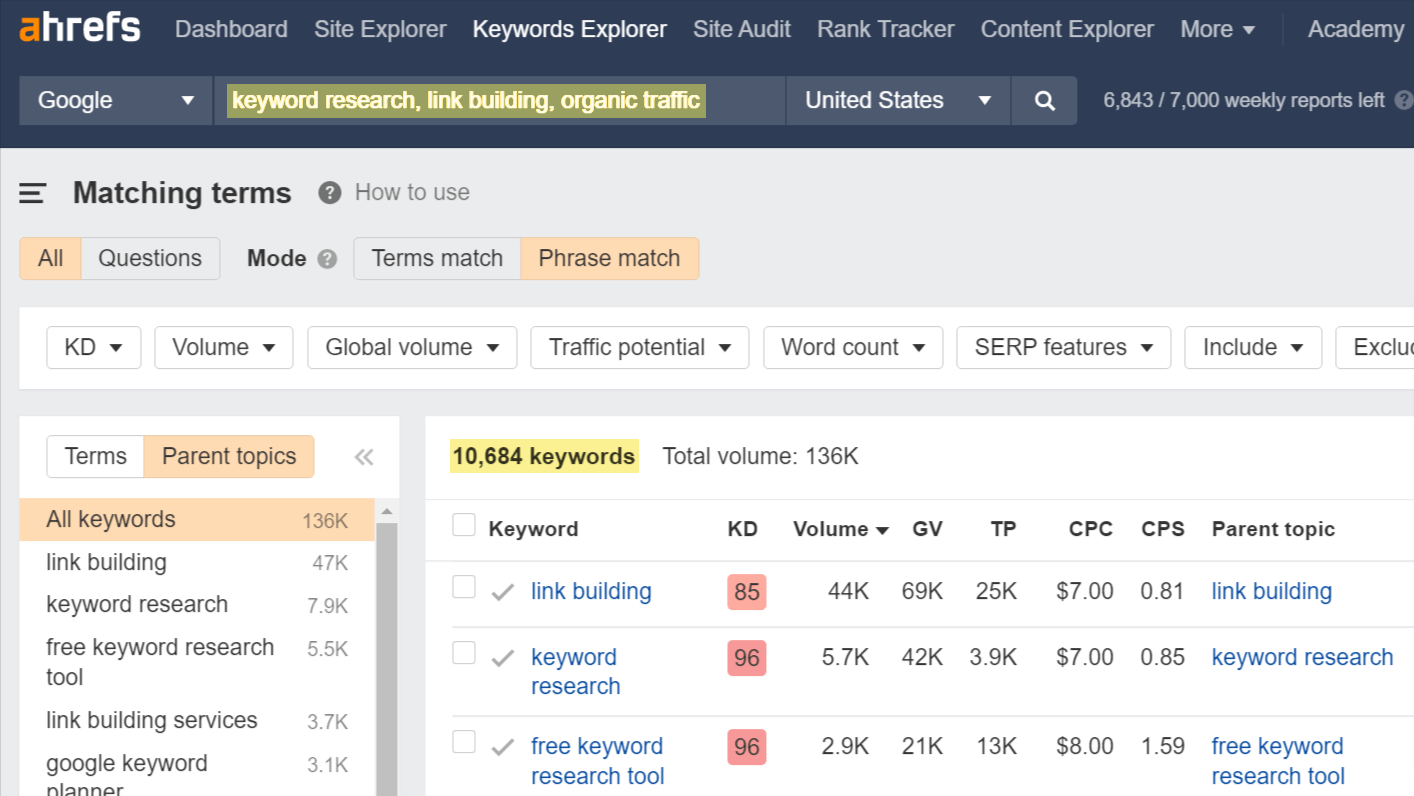
Using a tool like Ahrefs’ Keywords Explorer, you can automatically generate thousands of keyword ideas by just knowing a few topics your target audience is interested in.
This technique is called SEO content: creating content that’s designed to rank on search engines like Google.
Furthermore, we can measure the performance of that content by looking at the organic search traffic:
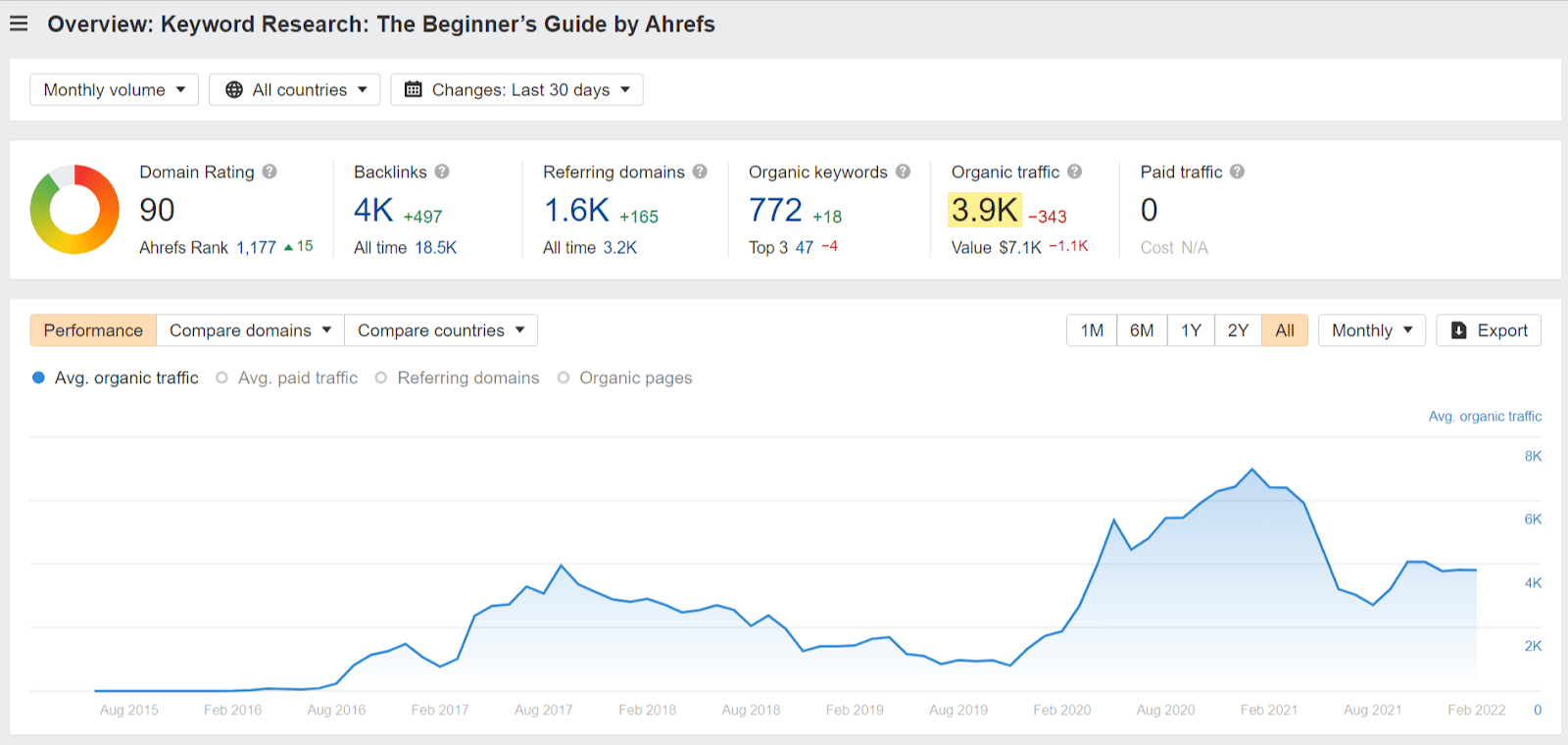
An acquisition metric can be anything that informs you of people coming in from “the outside” to your business. So your metrics for this stage will depend on your channels and your business model. These can be referral traffic from reviews, affiliate links from partners, app store visits, app downloads, and more.

Tracking acquisition is fairly easy in analytics tools like Google Analytics 4. You can get a breakdown of your highest volume and best-performing channels and track specific campaigns, mediums, and sources.
Measuring acquisition doesn’t necessarily mean tracking homepage visits. You can keep track of visits to any landing page/screen that, in your opinion, acts as a gateway to your business—for example, various landing pages used in your PPC campaigns.
Recommended reading: How to Use & Reduce Customer Acquisition Cost (CAC)
2. Activation
The activation stage is about determining, engaging, and measuring the actions you want people to take to experience your product or service. These include signing up for a free trial or a free tool, filling out a contact form, signing up for a newsletter, watching a product demo, etc.
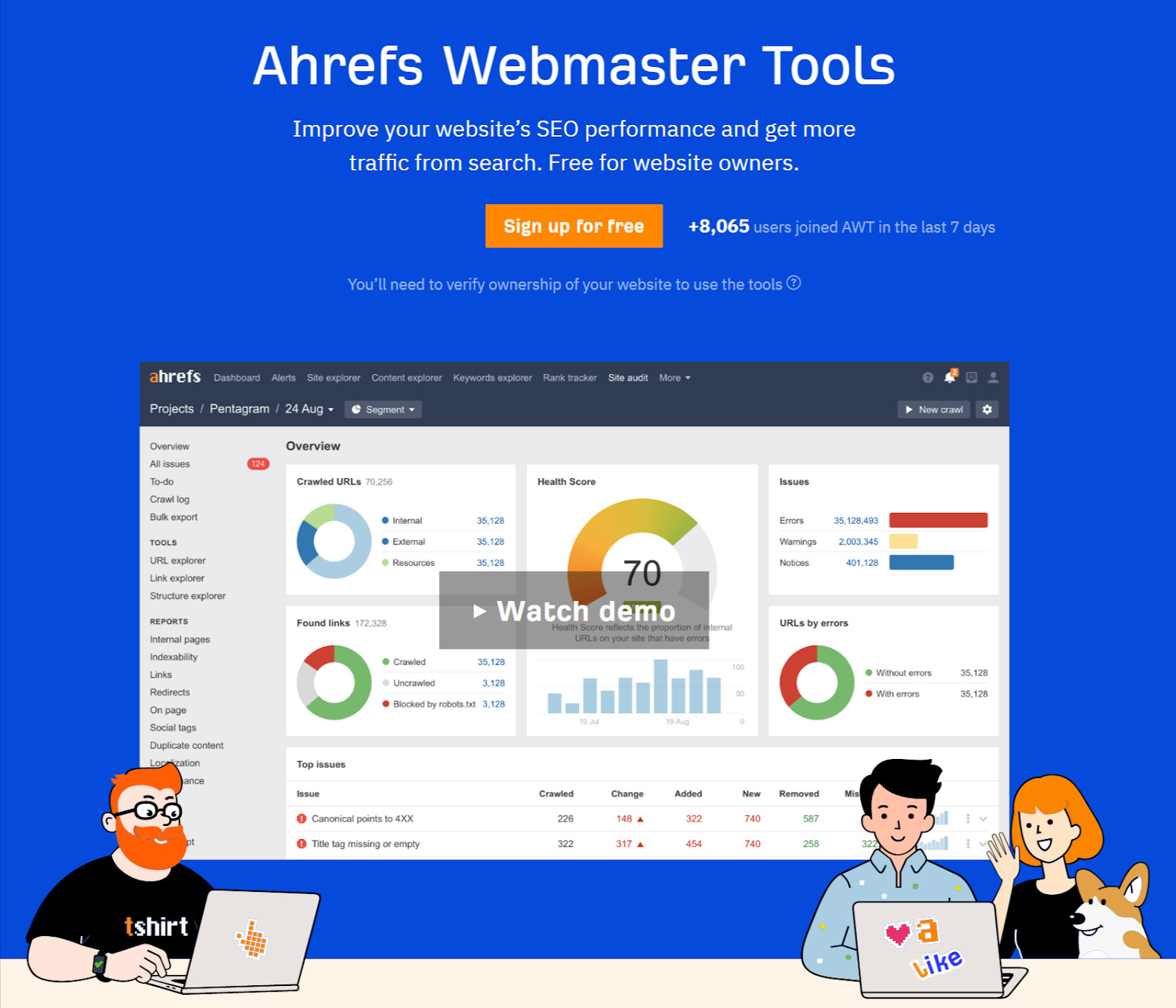
Ahrefs Webmaster Tools is a free SEO tool that we often promote in our content. It’s a great way to activate our visitors because they can use some of the product features for free as long as they want. And if at some point they need more, they have the option to upgrade that same account they’ve been used to.
The reason why you need to “activate” your visitors is that mere visits to your website are not enough to make someone buy from you. Without encouraging your visitors to learn more about or experience your product, they will remain just that—visitors who never become customers.
Of course, it’s nearly impossible to activate 100% of your newly acquired visitors. This study revealed that the average conversion rate on landing pages in the SaaS industry in 2021 was 3%.
Some people will just leave for various reasons (not the right time, just browsing, etc.). This doesn’t necessarily mean you’re doing something wrong. You can precisely target the most relevant keywords, advertise to niche audiences, or be an expert in ad targeting. But you’ll still be visited by people who aren’t ready to buy from you. It’s just part of the game.
Effectiveness in converting people from the acquisition stage to the activation stage depends on factors like:
- How “qualified” are your visitors when they first come to your site? Do they already know your brand? Are they just learning about the solution, or are they ready to make a purchase?
- How compelling is your value proposition?
- How much friction is there before you can activate your visitors? Have you set the bar too high/too low?
- The UX and UI of your website, e.g., aesthetics, site speed, and information architecture.
3. Retention
This part of the AARRR framework is about encouraging activated users to come back.
The idea behind this is if people repeatedly visit your business, it’s a sign that they want more of what you offer—possibly even enough to buy from you. Conversely, if people don’t come back after activation, it’s likely they’ve lost interest in making a purchase.
You can also look at it this way. If you’re activating users through a free trial of your product and your users come back to actually use the product, they are showing a behavioral pattern similar to that of paying customers: coming back multiple times to use the product.
So by encouraging people to come back, you are fostering that behavioral change. And by measuring this stage, you can more easily forecast which users/cohorts are likely to become customers.
Here are some factors that can influence this stage of the funnel:
- Expectations vs. reality – If you’re overpromising in the previous stages of the funnel and underdelivering here, people will drop off massively.
- Low value for the money – Sometimes, there is no other way to see if something is worth the money until you try it. In some cases, people find the value of their purchase doesn’t match the money they spent.
- Product education – If people don’t know how to use your product or where to find certain features, they will feel confused or even frustrated.
- Lack of a use case – It’s one thing to show people how they can do something or where they can find some function, and it’s another to inspire. Your customers may need a product like yours, but they may not know what to use it for or how to fit it into their workflow.
- Tire-kickers and hitchhikers – Some people whom you have successfully activated never meant to buy your product. Some people may just want to browse around, and that’s it. Others may sign up for that one particular thing you offered in your free trial without the need to use it regularly.
With some theory out of the way, let’s look at an example of influencing the retention stage.
At Ahrefs, we use product education as a way to keep our users informed and engaged. So when people sign up for an Ahrefs account, we send them three onboarding emails with an overview video of our toolset and some tips on how to get around the interface.
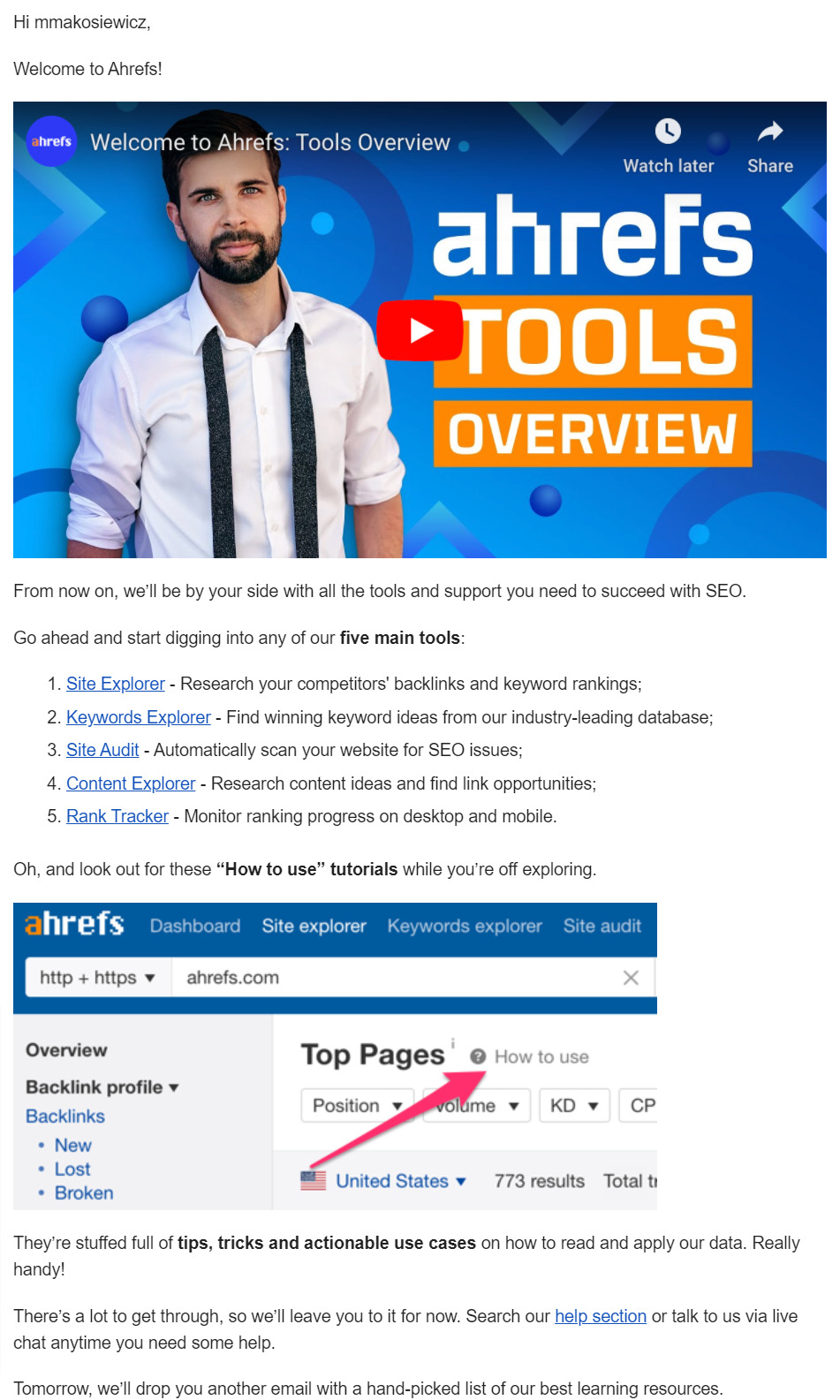
It’s a good way to deliver product education in your first email because people actually expect those. (On average, welcome emails get a 91.43% open rate.)
Essentially, that email provides a shortcut to all the product education we serve in other places: this blog, Ahrefs Academy, Ahrefs Insider group on Facebook, and educational videos on YouTube.
As you may have noticed in the screenshot above, we also provide support contextually right inside the product. Every metric that users find inside the toolset has a hint explaining what it is for, and all reports are accompanied by tutorials.
When it comes to measuring retention, the best way to do it is by measuring product engagement (of course, if you’re offering some kind of free trial). For example, you can track how many users log in at least three times in a seven-day period. (You can use tools like Mixpanel or Heap.)
On a side note, if you discover a unique pattern of product usage among your paying customers, you can later use that to modify your retention metrics to better identify users who are most likely to upgrade their accounts.
If you’re not offering a direct product experience in the activation stage, you can reach for other metrics like:
- Repeated visits to your website (or certain pages in it).
- Newsletters being opened.
- A continued conversation with your sales team.
Pro tip
In fact, in this talk about the pirate metrics, Dave says that “people bounce off your site because they didn’t mean to come there. … Those aren’t the folks that you’re really looking at.”
This isn’t entirely accurate.
First of all, the “bounce rate” metric most often paints a skewed picture of user engagement. That’s why it has been quite recently replaced in Google Analytics 4 by another more universal and more “sensitive” metric.
Second, it may take several touchpoints for a new user to be interested in your product.
So despite the original theory, you may want to consider tactics that will encourage your inactivated users to come back, e.g., retargeting, blogging, being active on social media.
4. Referral
The referral stage in your AARRR metrics should answer the question, “How do we know people like us enough to recommend us, and how can we influence that?”
Referral is just one of the many acquisition channels. However, when someone likes your product enough to tell others, that can’t be a better sign that you’ve created something of…
[ad_2]
